Darlene Morgan - Lines of Devotion
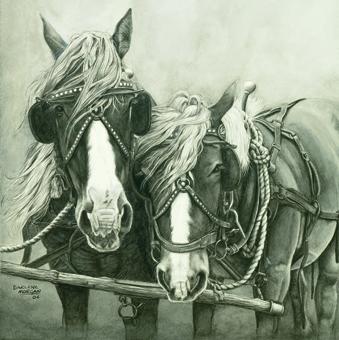
Darlene was the daughter of accomplished artist Merle Olson and grew up in a home surrounded by good art. She drew and painted western art from a very young age. “There wasn’t a time that I didn’t have a pencil in my hand sketching and drawing people’s portraits.” There was never a question that her life’s work would be art. Darlene does mostly portraiture, whether it’s Native Americans or a grandchild. Darlene started painting Native Americans shortly after the family moved to Bigfork, Montana, 45 years ago. “We live near two Indian Reservations and are surrounded by their culture.
"I started out painting in oils and then started specializing in India ink washes. I love dramatic light and shadow, which renders itself so well with the black and white India ink.”
Darlene’s life has been fraught with struggles and pain. She is the mother of five children. Two of her sons were hemophiliacs who died during the AIDS epidemic, when they were infected with HIV from blood products during the 1980’s. “We had a long struggle of dealing with their disease, which sidetracked me for years from doing my painting. The suffering and sorrow made me see things more in depth and gave me better perception. I approach my art as a gift from God and I feel that I must develop and diligently refine as long as I can paint and create.“
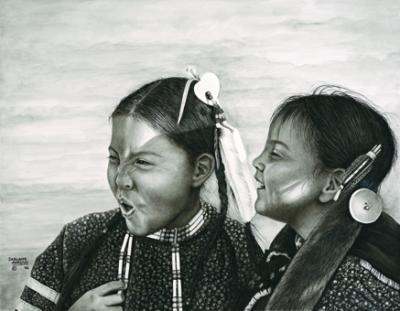
India ink is an old, but somewhat unusual art form today. In the past it has often associated with tattoos. How did you come about making the artistic choice for this medium?
My mother introduced me to India ink in the form of ink washes. It lends itself well to contrast and detail. Not many people work in ink and very few using it as a wash. Most use ink with a pen. Mine are often inaccurately called pen and inks, but I tell people that the only pen I use on my paintings is when I sign my name. I like working in a medium that isn’t flooded with artists. It’s different and my technique isn’t like any other. Creating in black and white is not easy. The values have to be spot on, or the piece doesn’t work.
Early India or “Chinese” ink was a mix of glue, charred bones, and lampblack or soot. How is India ink manufactured today, and do you think the “modern” methods add or detract from your finished work?
I purchase bottled India ink of a high quality. It works well with my application, so I don’t question how it’s made. It’s permanent black ink.
What are the difficulties of working with ink?
You cannot make any mistakes with India ink. You can’t erase it or paint over it. It’s permanent once it’s on the paper, so there is no room for error. You also have to get all the values right, because they are black and white. I use a small detail brush for all the fine detail. This takes a great deal of time. You can’t rush this process. Beadwork and hair have to be individually painted.

The great body of your work is in portraits of people, often children, but also of Native Americans. As an artist, what appeals most to you about this subject matter?
I have painted Native American’s for over 45 years, almost exclusively. I love their culture, faces, apparel, beadwork, and jewelry. Their children have fascinating eyes and hair. I love painting eyes, for they are the windows to the soul. Children are a favorite subject of mine, but I also like to paint the old wrinkled faces that tell a story of their own. Horses are another favorite. I think they are one of the most beautiful creatures God created.
What is it like for you when involved in a work? How does the creative process feel when you are “in the zone?”
I am always excited to start a new project. I have to feel enthusiastic about the subject I’m going to paint. There has to be something that draws me to that subject. I paint from photographs, mainly because my paintings are such a long process that no one would sit that long. Most have been photographed at pow wows. Once I’m into the piece, I am working to achieve the look I am striving for. I don’t know if I would call it “in the zone”, but it’s in the process of the work itself. Enthusiasm for what I am doing is the key.
Who or what has been the greatest influence on your artistic expression?
My mother, Merle Olson, was a great influence, since she was an artist of great merit. She is the one who introduced me to India ink, since she had used the medium as well. Her technique was much different from mine. She mainly painted landscapes and was also a sculptor. However, she was very versatile and painted portraits of people and did animals and wildlife as well. She started me on the right path with my career. She opened doors for me when I was young — with exhibits and such shows as the C. M. Russell Show in Great Falls. She was my mentor and my best critic.
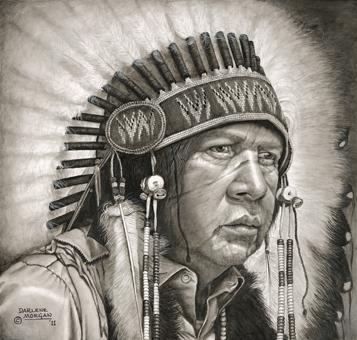
When you are not working, what pastimes do you enjoy?
Traveling and seeing our great country along with our neighboring countries. My husband, Steve, and I spend a lot of time in the southwest in the winter. I don’t like my hands to be idle. I like to knit and play the piano. I enjoy music. It’s a de-stressor. I enjoy visiting our children and grandchildren. I am currently working to finish my deceased son’s book — I promised I’d finish it for him when he was dying. I am currently a Make-A-Wish volunteer. Since one of our sons (and our family) went on a Make-A-Wish trip before he died, it’s something that is dear to my heart.
What are your artistic goals over the next year?
It’s a goal that I have every year. I strive to improve and create new pieces. I have added doing pastels as well and find freedom in that medium. If I make a mistake or need to rework something, I can do that very easily. Also working in color for a change is refreshing. I like to mix it up lately. I’ll do a couple of inks and then do a pastel. Pastel lends itself well to portraiture, which is my forte.
What character traits of Darlene Morgan are dominant creating your art?
My most dominant is perfectionism. I have always been a perfectionist. I often times say it’s a curse. Even if I’m just patting out a hamburger patty, it has to be perfectly round and uniform in thickness. Nothing ever measures up to my standards, so I am continually striving to do better work. I work long and hard on my paintings. One of the things that annoys me the most is when someone refers to my paintings as sketches. They are far from a sketch. They are painted, not drawn. My ink washes require more time than most oil paintings.
~ Interview by Bill Muhlenfeld
To experience more of Darlene’s western art work visit www.artistdarlenemorgan.com

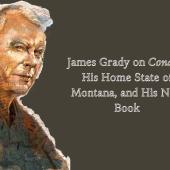
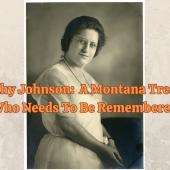


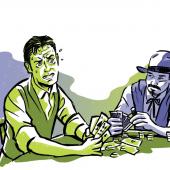
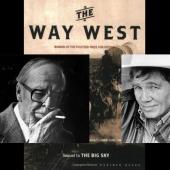





Leave a Comment Here